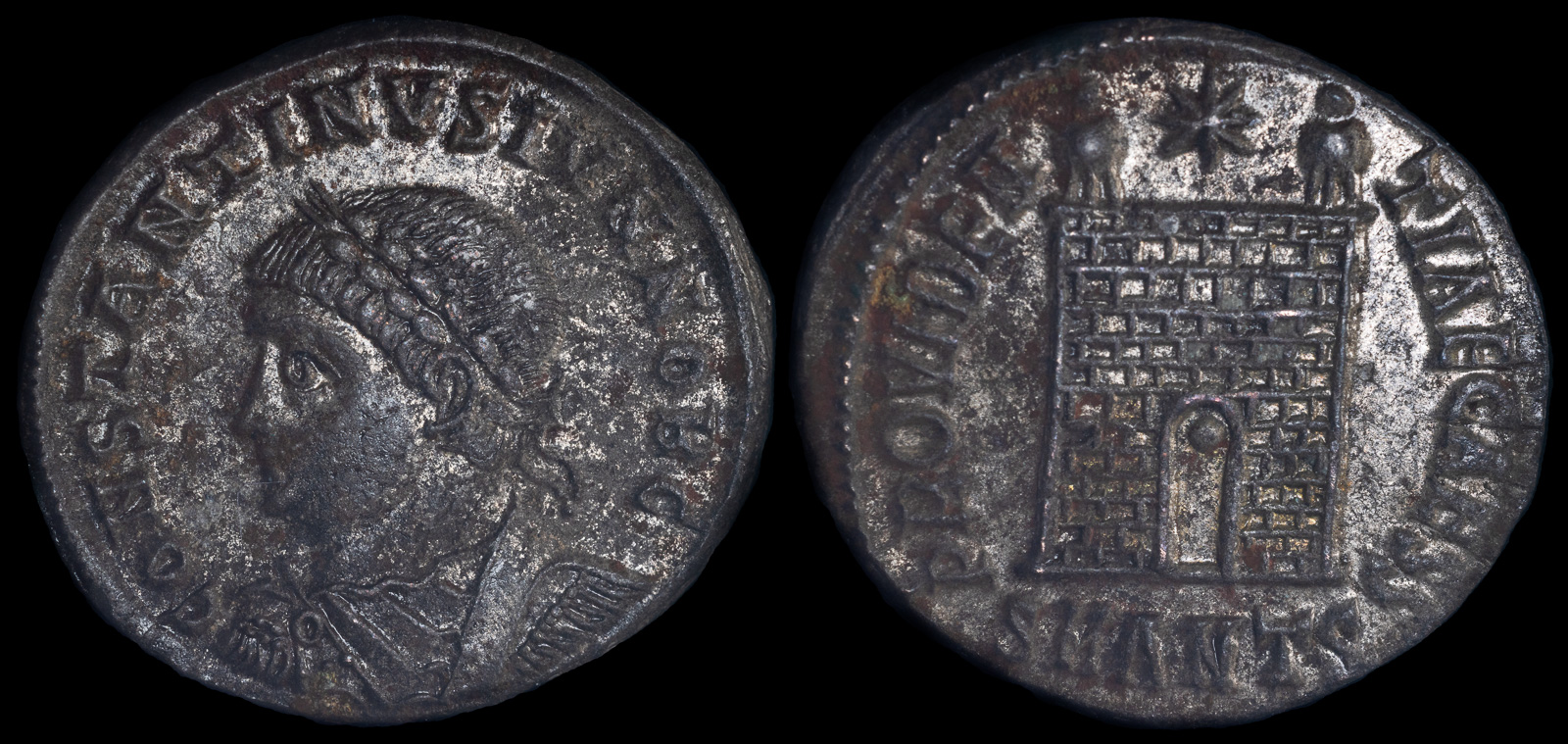Nummus
View All Tags
The nummus was initially a small bronze coin, created to provide the empire with a more stable and reliable currency after the empire had suffered from the debasement of its silver coins. Under Diocletian’s monetary reforms, the nummus was part of a broader effort to standardize Roman coinage. The name “nummus” itself is derived from the Latin word for “coin,” reflecting its role as the basic unit of currency for everyday transactions, particularly in regions where more valuable coins like the aureus or denarius were impractical for smaller purchases.
The nummus was introduced as part of the Antonianus and radiate series of coins and was initially made of bronze or copper alloy. It was often used for smaller transactions, replacing earlier, smaller bronze coins such as the as or the quadrans. As the Roman economy increasingly relied on the use of these lower-value coins, the nummus became widely circulated throughout the empire.
In the later part of the 3rd and early 4th centuries, the use of the nummus became particularly prevalent during the reign of Constantine the Great, who, after his victory at the Battle of the Milvian Bridge in 312 CE, reformed the currency system again. Under Constantine, the nummus was sometimes overstruck or rebranded into a more standardized and unified imperial currency system. This standardization of the nummus also included the famous Solidus, a gold coin that eventually replaced the aureus, further solidifying the monetary reforms of the time.
Over time, the nummus underwent several changes in its metal composition and size, largely due to the pressures of inflation and the changing needs of the Roman economy. By the end of the 4th century CE, under Emperor Theodosius I, the nummus had largely disappeared from circulation as the Roman Empire entered a period of significant economic decline. However, the nummus’s legacy can still be seen in the way it influenced later medieval and early Byzantine coinage, laying the groundwork for the future development of small denomination coins.

Constantine II 326-327 CE
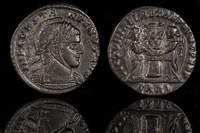
Constantine the Great 319 CE

Crispus 322-323 CE

Delmatius 335-336 CE
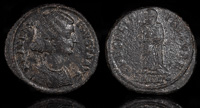
Fausta 325-326 CE
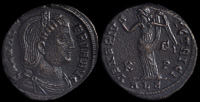
Galeria Valeria 308 CE
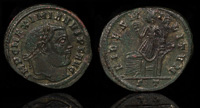
Galerius 305 CE
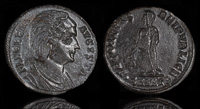
Helena 327-329 CE
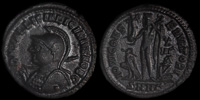
Licinius II 321-324 CE
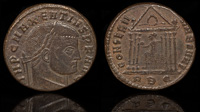
Maxentius 308-310 CE

Maximian 295-296 CE

Maximinus Daia 312 CE
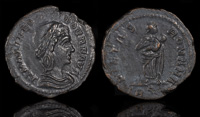
Theodora 337-340 CE
